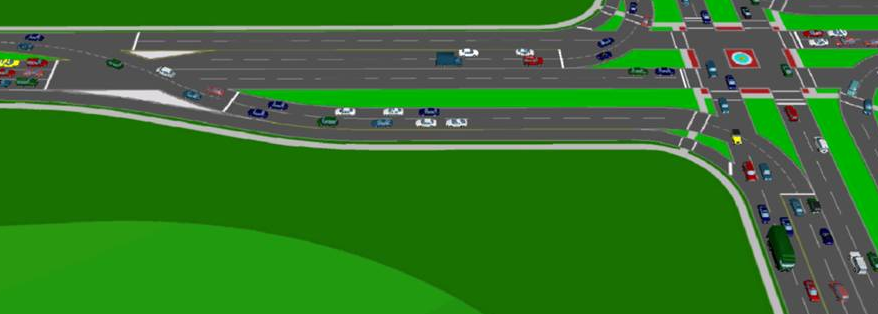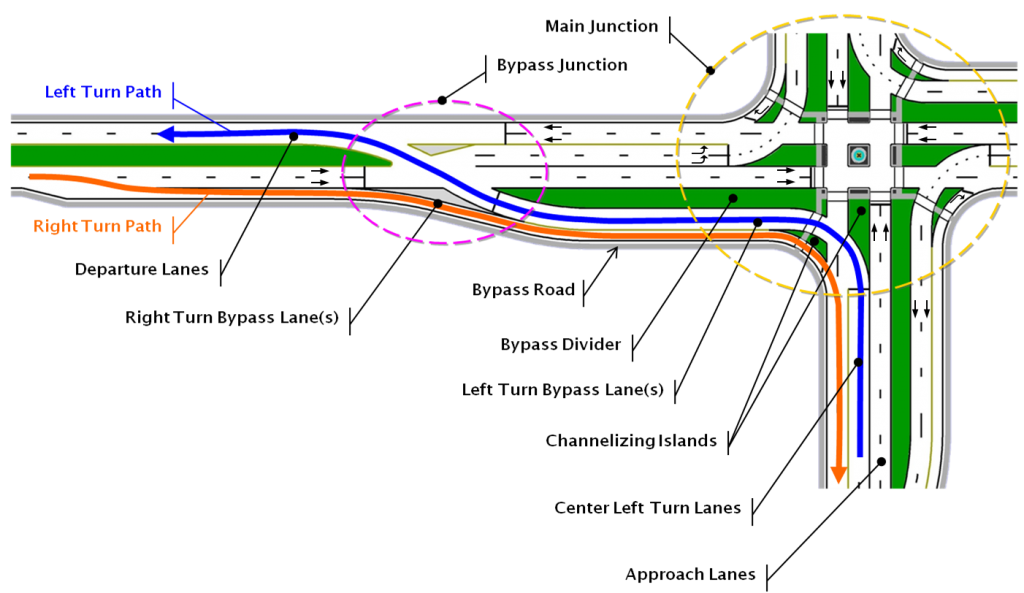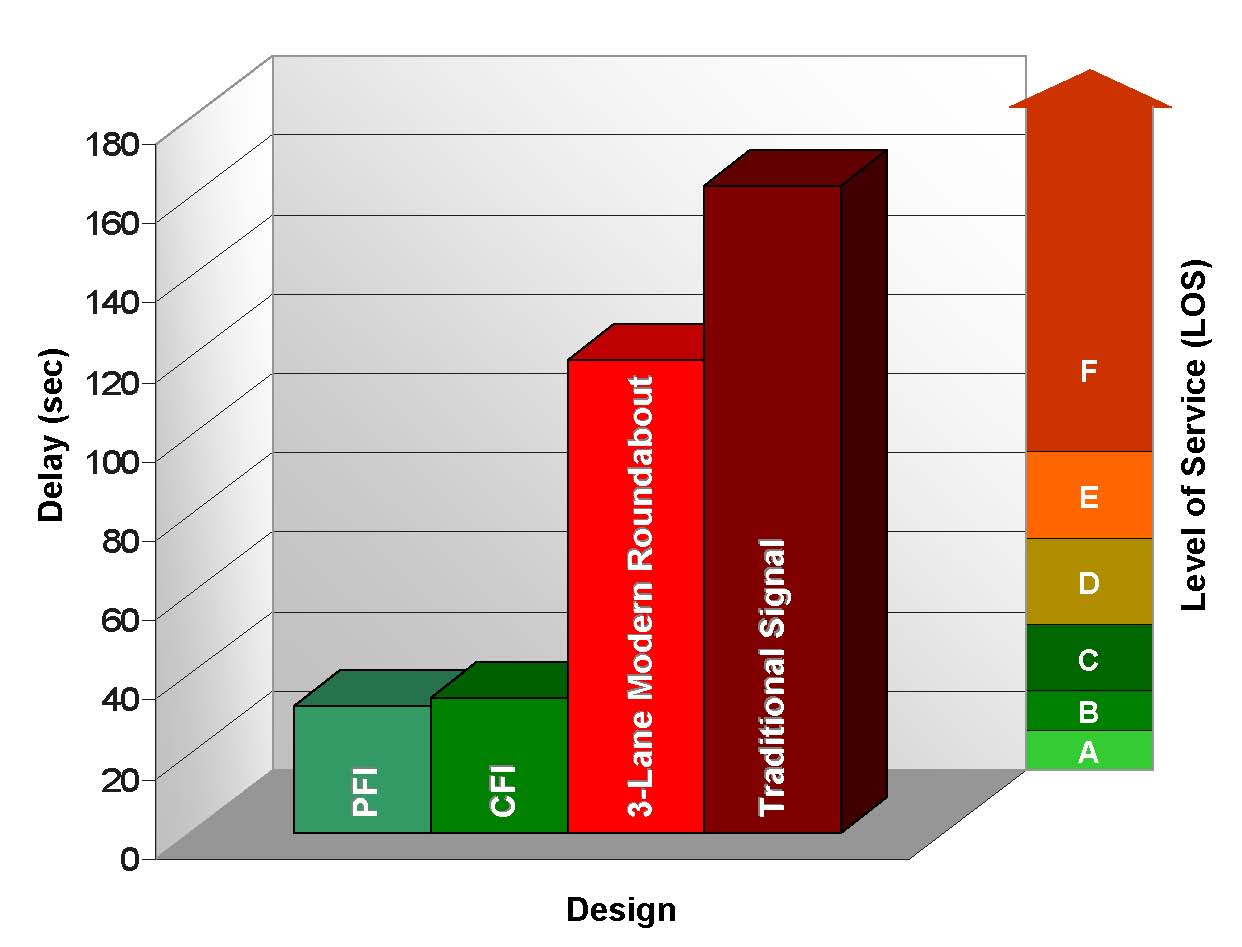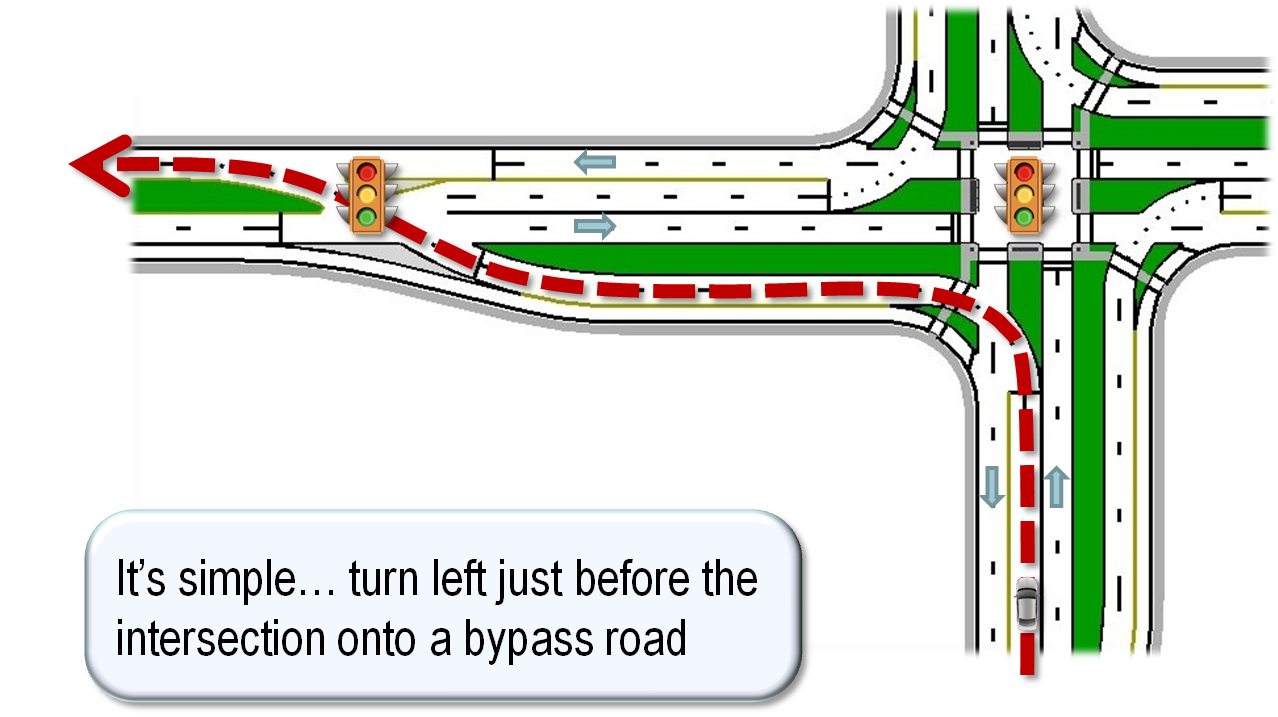A simple idea: left turns bypass the main intersection by first
turning onto a cross street frontage road.
The result: greatly reduce intersection delay and congestion
at a fraction of the cost and impacts of a grade-separated interchange.
Watch the 10-min intro on the PFI or choose from the playlist to watch a microsimulation of PFI concept.
Or select a video from the playlist (click on the menu bar icon in the video frame or go to GFParsons on YouTube by clicking here).
Downloadable Resource Materials
The patented parallel flow intersection is a new traffic innovation capable of reducing vehicle delay by as much as 90% over a comparable traditional signalized intersection because the parallel flow has fewer phases per signal cycle.
This increased efficiency is accomplished by arranging for left turns to occur just prior to the main intersection using a frontage road along the cross street. Left turn movements are then able to proceed in the same signal phase as the cross street through movement.
And unlike many unconventional intersection designs, the parallel flow intersection provides for intuitive direct left turns nearly from the same stop bar location as a traditional signal.

Anatomy of a parallel flow intersection

Efficient operation

Direct, intuitive, safer left turns

Full 2-phase PFI layout

PFI advantages over traditional intersections
Can reduce vehicle delay by over 80% of congested traditional intersection
Greater safety with no permitted left turn movements, pedestrian islands, and less congestion and stopped vehicles
Fewer phases per signal cycle and shorter cycle lengths equal less lost time
Less fuel usage
Improves air quality
Channelizing islands create landscaping opportunities
Fewer conflict points
Fast conversion from existing traditional intersection and safer work zones since most work occurs on the outsides
Flexible geometry to fit variety of physical site requirements
More intuitive to drive than most unconventional intersection designs
Can be constructed in various intersection or interchange variants
PFI advantages over traditional interchanges
Capacity approaches or exceeds arterial interchanges with no bridges or retaining walls
Much lower cost and less delay at the arterial intersections
Much less design and construction time required and safer workzones
Much lower visual impact
Less noise
Constructible in phases (two legs then the other two when needed) while interchanges must be fully constructed for design year traffic
PFI advantages over continuous flow intersection (CFI)
More intuitive (left turn is not displaced)
Requires 50% less approach length
Lower risk of misjudged crossover maneuver and head-on collisions
Lower risk with improper turns (e.g. improper left turn at CFI can be high speed crash)
Results in more space between adjacent main street intersections for lane changing
Fewer property and driveway impacts
No overhead guide signs (standard signage only for the PFI)
Slightly higher capacity with more right turn volume (CFI slightly higher with more left turn volume)
Simpler signal timing, operation and design
Faster conversion of existing intersection if no changes (lane addition or lengthening) of left turn lanes
Choosing between the PFI and CFI is largely site dependent. The interchange (or grade separation) should be the option of last resort when the roundabout and two phase at-grade designs are shown to be insufficient to accommodate design year traffic volumes. Interchanges are expensive, take a long time to clear regulations, have higher impacts and often degrade operation on the arterial (in favor of the freeway movement).
PFI advantage over modern roundabout
Much higher capacity than three or four lane roundabout
In general, GFParsons recommends the following order of preference for intersection designs based on capacity needs –
- Modern roundabout – for low to medium traffic volumes (< 4,500 vph) or unless site conditions dictate otherwise such as 3+ approach lanes or very high cost impacts
- 2-phase signal – generally for high traffic volumes (> 4,500 vph) – the PFI and CFI can accommodate traffic volumes exceeding 10,000 vehicles per hour with 3 or 4 through lanes
The modern roundabout and 2-phase intersections (PFI and CFI) are not competing designs but rather have different traffic capacities. The modern roundabout should be treated as preferred to any signalized intersection where the roundabout has adequate capacity (to a maximum of three circulating lanes up to approx. 4,500 vehicles per hour and maximum two approach lanes). This is due to the roundabout’s superior safety and other advantages over signals. But when traffic volumes exceed the capacity of the roundabout, the PFI and CFI should be considered preferable to interchange construction.
